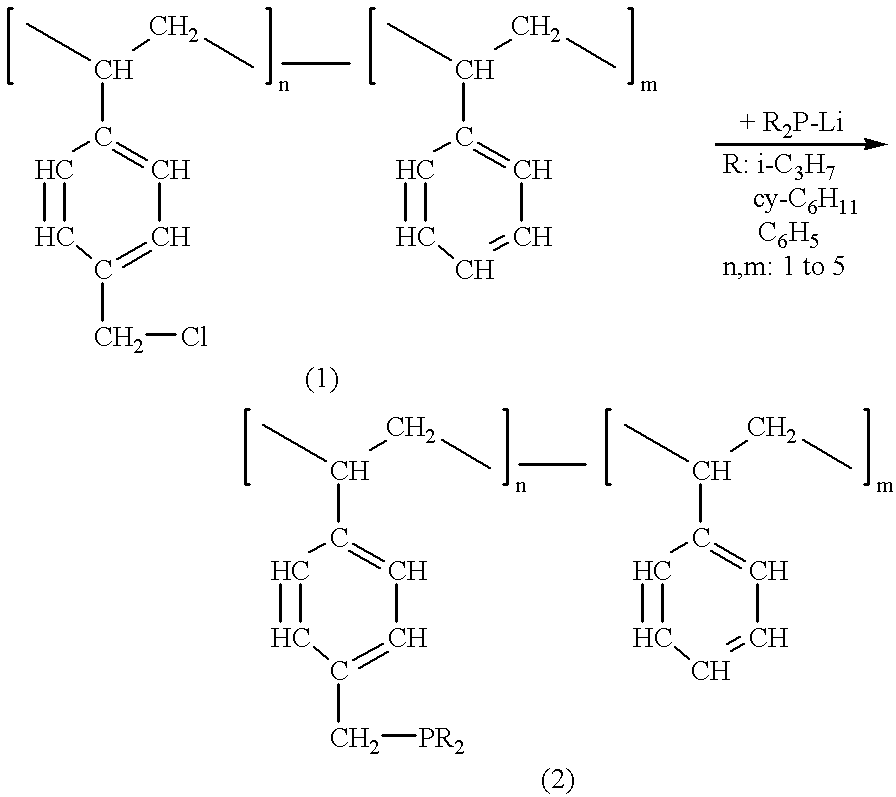Catalyst obtained from phosphinoalkyl-functionalized polystyrene and method for the production of delta-lactone
a technology of phosphinoalkylfunctionalized polystyrene and catalyst, which is applied in the direction of organic compound/hydride/coordination complex catalyst, physical/chemical process catalyst, organic chemistry, etc., can solve the problems of contaminating the desired end product, unable to recapture the catalyst, and expensive base materials to be provided
- Summary
- Abstract
- Description
- Claims
- Application Information
AI Technical Summary
Problems solved by technology
Method used
Image
Examples
experiment 2
Catalyses with Pre-prepared Catalyst
For the pre-preparation of a catalyst from [(diisopropylphosphino)methyl]polystyrene and (.eta..sup.5 -cyclopentadienyl)(.eta..sup.3 -allyl) palladium, 36.8 mg [.eta..sup.5 -cyclopentadienyl)(.eta..sup.3 -allyl) palladium (0.173 mmol) dissolved in 10 ml acetonitrile are added to 227.6 mg [(diisopropylphosphino)methyl]polystyrene(with 0.333 mmol bonded phosphor) in 20 ml acetonitrile by stirring the mixture strongly at 25.degree. C. The reaction mixture is kept at 60.degree. C. for four hours. Subsequently, the mixture is cooled down to 25.degree. C., the catalyst is filtered off and is washed five times with respectively 25 ml acetonitrile. Following the drying in the oil pump vacuum at 25.degree. C., a dark brown solid material is obtained.
The catalyst, which is stirred into 30 ml acetonitrile, is transferred by means of a PTFE cannula to the autoclave. The further reaction then occurs analog to the process sequence in example 1.
PUM
| Property | Measurement | Unit |
|---|---|---|
| total pressure | aaaaa | aaaaa |
| temperature | aaaaa | aaaaa |
| pressure | aaaaa | aaaaa |
Abstract
Description
Claims
Application Information
 Login to View More
Login to View More - R&D
- Intellectual Property
- Life Sciences
- Materials
- Tech Scout
- Unparalleled Data Quality
- Higher Quality Content
- 60% Fewer Hallucinations
Browse by: Latest US Patents, China's latest patents, Technical Efficacy Thesaurus, Application Domain, Technology Topic, Popular Technical Reports.
© 2025 PatSnap. All rights reserved.Legal|Privacy policy|Modern Slavery Act Transparency Statement|Sitemap|About US| Contact US: help@patsnap.com


